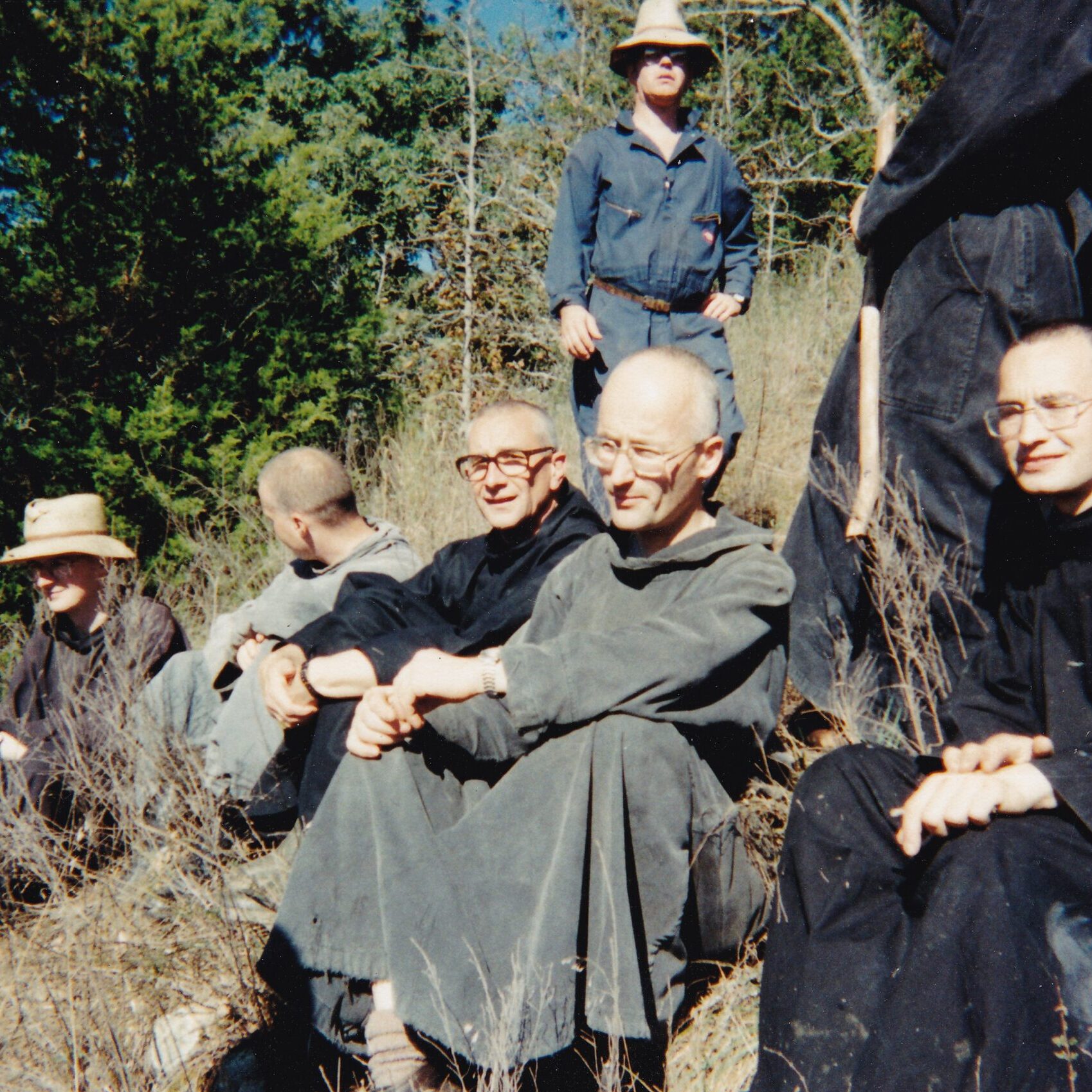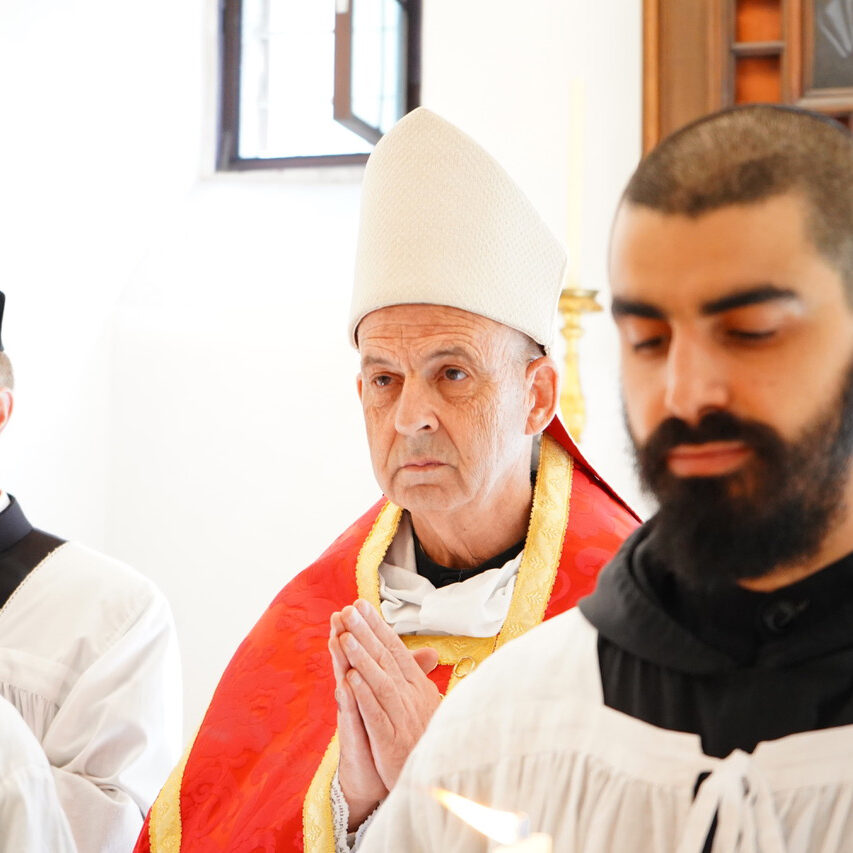Dear Friend of Clear Creek Abbey,
Perhaps the Mayan Calendar was right after all. Maybe the world—or a world—really ended on December 21st of 2012, as the last funeral services were being held for the young Sandy Hook School victims and while a ‘doomsday’ mood gripped the American nation at the approach of Christmas. But we know…
We know as Christians that the Infant King that came once upon a time to Bethlehem IS also the Crucified Lord, the King of heaven and earth, victorious over sin and death through death. It was for this reason that the Magi brought Him not only gold and incense to honor His kingship and His divinity but also myrrh for His burial. The whole Christian program of birth, death and resurrection must be relived by each successive generation, as it was eminently lived by the Messiah, Jesus of Nazareth. That is why, in this season leading up to Lent, Holy Mother Church now turns her contemplation from the joys of Bethlehem to more sobering subjects, tending toward the Cross with faith and unconquerable hope that looks already to the light that comes from beyond the Tomb. As long as time continues its course, old worlds will die, and new ones will be born from the ashes.
That wonderful “apostle of common sense,” G.K. Chesterton, helps us understand the meaning of this rebirth. In chapter six of his The Everlasting Man, he notes with cheerful realism that
Christendom has had a series of revolutions and in each one of them Christianity has died. Christianity has died many times and risen again; for it had a God who knew the way out of the grave. But the first extraordinary fact which marks this history is this: … that at the end of each of these revolutions the same religion has again been found on top. The Faith is always converting the age, not as an old religion but as a new religion.
These words hit home in a time when many Americans no longer recognize the country they once knew, when fundamental rights—especially the free exercise of religion—seem endangered as never before. There is clearly a kind of secular revolution that is turning our world upside down, most notably in the area of the family. It is as if the Christian Faith were fading away from our public conscience, dying in the hearts of men and women. How do we face such a challenge? How will we find again the way to Heaven?
At Clear Creek, young postulants continue to arrive—thanks be to God—and in the small village around the abbey, babies are being born while houses are built to shelter them and their parents. The doom weighing upon a society that seems increasingly each day to expect news of the next shooting spree casts perhaps a smaller shadow here. This is not to say that we enjoy some sort of indemnity from domestic violence that could break out anywhere or that we do not grieve with the victims elsewhere… It is just that we have a new song to sing: Cantate Domino canticum novum; quia mirabilia fecit Dominus. Sing ye to the Lord a new canticle; for the Lord hath done wonderful things. (Psalm 97) Perhaps this needs a bit of explanation.
Each night at the Divine Office, we begin our liturgical song before the break of day and meet the dawn with this song of praise, wherein are found much peace and joy, despite the occasional harshness of the season. Although the words we chant are certainly not new in the sense of having been recently composed, they are nevertheless infused with a newness that is from God and which does not fade with the latest fashions. The Holy Spirit brings a newness not of this world. Not only the monks but many friends of the monks come to participate in this great prayer.
While, through ever improved electronic devices, today’s Pied Pipers lead our children (and many adults) away to destruction, we monks and our friends believe that this “new” song of the Holy Liturgy will be a most effective means of leading them to know again the Good, the True and the Beautiful of our Faith. This is our way of participating in the New Evangelization of the world that has been requested by several Popes.
We count on you to help us with this task of praise wherever you may be, and we assure you of our communion in prayer. As always, we are deeply touched by your kind help of every sort. May God bless you and Our Lady intercede for all your intentions.
+ br. Philip Anderson, abbot
Dear Friend of Clear Creek Abbey,
Perhaps the Mayan Calendar was right after all. Maybe the world—or a world—really ended on December 21st of 2012, as the last funeral services were being held for the young Sandy Hook School victims and while a ‘doomsday’ mood gripped the American nation at the approach of Christmas. But we know…
We know as Christians that the Infant King that came once upon a time to Bethlehem IS also the Crucified Lord, the King of heaven and earth, victorious over sin and death through death. It was for this reason that the Magi brought Him not only gold and incense to honor His kingship and His divinity but also myrrh for His burial. The whole Christian program of birth, death and resurrection must be relived by each successive generation, as it was eminently lived by the Messiah, Jesus of Nazareth. That is why, in this season leading up to Lent, Holy Mother Church now turns her contemplation from the joys of Bethlehem to more sobering subjects, tending toward the Cross with faith and unconquerable hope that looks already to the light that comes from beyond the Tomb. As long as time continues its course, old worlds will die, and new ones will be born from the ashes.
That wonderful “apostle of common sense,” G.K. Chesterton, helps us understand the meaning of this rebirth. In chapter six of his The Everlasting Man, he notes with cheerful realism that
Christendom has had a series of revolutions and in each one of them Christianity has died. Christianity has died many times and risen again; for it had a God who knew the way out of the grave. But the first extraordinary fact which marks this history is this: … that at the end of each of these revolutions the same religion has again been found on top. The Faith is always converting the age, not as an old religion but as a new religion.
These words hit home in a time when many Americans no longer recognize the country they once knew, when fundamental rights—especially the free exercise of religion—seem endangered as never before. There is clearly a kind of secular revolution that is turning our world upside down, most notably in the area of the family. It is as if the Christian Faith were fading away from our public conscience, dying in the hearts of men and women. How do we face such a challenge? How will we find again the way to Heaven?
At Clear Creek, young postulants continue to arrive—thanks be to God—and in the small village around the abbey, babies are being born while houses are built to shelter them and their parents. The doom weighing upon a society that seems increasingly each day to expect news of the next shooting spree casts perhaps a smaller shadow here. This is not to say that we enjoy some sort of indemnity from domestic violence that could break out anywhere or that we do not grieve with the victims elsewhere… It is just that we have a new song to sing: Cantate Domino canticum novum; quia mirabilia fecit Dominus. Sing ye to the Lord a new canticle; for the Lord hath done wonderful things. (Psalm 97) Perhaps this needs a bit of explanation.
Each night at the Divine Office, we begin our liturgical song before the break of day and meet the dawn with this song of praise, wherein are found much peace and joy, despite the occasional harshness of the season. Although the words we chant are certainly not new in the sense of having been recently composed, they are nevertheless infused with a newness that is from God and which does not fade with the latest fashions. The Holy Spirit brings a newness not of this world. Not only the monks but many friends of the monks come to participate in this great prayer.
While, through ever improved electronic devices, today’s Pied Pipers lead our children (and many adults) away to destruction, we monks and our friends believe that this “new” song of the Holy Liturgy will be a most effective means of leading them to know again the Good, the True and the Beautiful of our Faith. This is our way of participating in the New Evangelization of the world that has been requested by several Popes.
We count on you to help us with this task of praise wherever you may be, and we assure you of our communion in prayer. As always, we are deeply touched by your kind help of every sort. May God bless you and Our Lady intercede for all your intentions.
+ br. Philip Anderson, abbot






